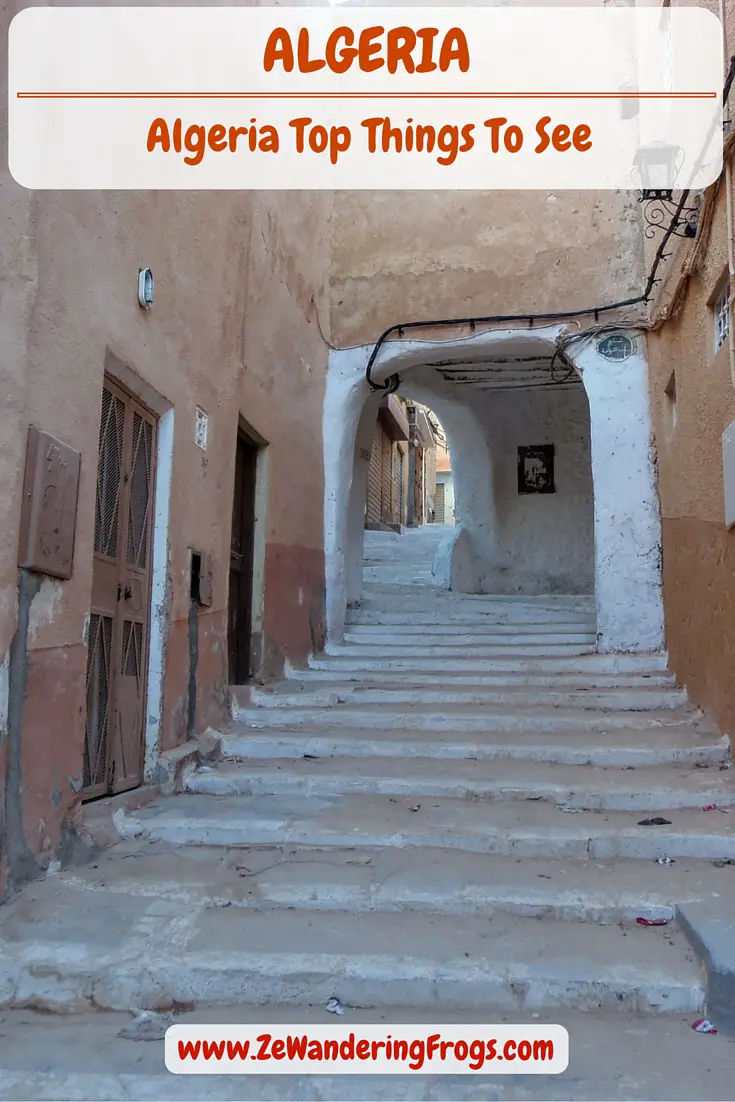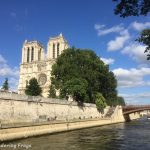Algeria is located in North Africa between the Mediterranean coastline in the north and the Saharan desert in the south. One of the largest countries in the world, Algeria is not on the tourist path due to security concerns but organized tours or experienced independent travelers can admire several stunning well-preserved historical sites dating back to the Romans, and from the empires and dynasties of ancient Numidians, Phoenicians, Ottomans and more. Beside urban cities like Algiers and Oran, Algeria’s main draw is its Saharan region, where visitors can experience the desert and its wide landscape of sand dunes.
Here are the Top Things to See in Algeria.
ALGIERS
The country’s capital and the largest city was initially founded in 944 by the Berbers by the Mediterranean Sea. Today the city is divided into two parts, the modern section by the seashore, and the ancient city with its 17th-century UNESCO World Heritage Site Kasbah seated on the hill. The main attractions include the Notre Dame d’Afrique Basilica, the Monument des Martyrs commemorating the Algerian war for independence, the green Jardin d’Essai du Hamma, the 17th-century El Jedid Mosque, one of the Dey’s old residences Villa Abd-el-Hair, the Great Mosque of Algiers and one of the oldest in Algiers, and La Grande Poste.
Ghardaïa – Entrance Gate
ORAN
The second most important city after Algiers, Oran is a major commercial hub, with an old quarter and an 18th-century mosque. The town is also reputed for the artisanal products of its Medina Jedida, theCathédrale du Sacré-Cœur, the 14th-century fort of Merinid Sultan Abou Hassan also known as the Chateau Neuf (New Castle), and the Djebel Murdjajo (Aïdour mountains). Besides its historical buildings and secluded beaches like the Madagh beach, Oran is a great place to discover Algerian cuisine and listen to Rai music, which was born in the city.
Wall Painting of a Tea Ceremony
The second most important city after Algiers, Oran is a major commercial hub, with an old quarter and an 18th-century mosque. The town is also reputed for the artisanal products of its Medina Jedida, theCathédrale du Sacré-Cœur, the 14th-century fort of Merinid Sultan Abou Hassan also known as the Chateau Neuf (New Castle), and the Djebel Murdjajo (Aïdour mountains). Besides its historical buildings and secluded beaches like the Madagh beach, Oran is a great place to discover Algerian cuisine and listen to Rai music, which was born in the city.
El Menia – Hassi Gara. Sunset from the Ksar
The second most important city after Algiers, Oran is a major commercial hub, with an old quarter and an 18th-century mosque. The town is also reputed for the artisanal products of its Medina Jedida, theCathédrale du Sacré-Cœur, the 14th-century fort of Merinid Sultan Abou Hassan also known as the Chateau Neuf (New Castle), and the Djebel Murdjajo (Aïdour mountains). Besides its historical buildings and secluded beaches like the Madagh beach, Oran is a great place to discover Algerian cuisine and listen to Rai music, which was born in the city.
CONSTANTINE
Often referred as the “City of Bridges”, the city is also known for its Abd al-Hamid Ben Badis Mosque, the Kasbah, the Massinissa’s Mausoleum of the 1st King of Numidia, and the Palace of Ahmed Bey who was the last Ottoman Bey of Constantine until 1848.
View of Constantine
Other must-see is the Rhummel Gorges.
Constantine – Suspended Bridge Sidi M’Cid and Rhummel Gorges
Constantine – Rhummel Gorges
ANNABA
One of the main economic centers of the country, Annaba is also a major tourist destination. The main attractions are the St-Augustin Cathedral, the Roman ruins of Hippo Regius with its mosaics and bronzes and the surrounded mountains including the Eddoug National Park. Known for an active nightlife around Green Main Street, Annaba is popular for the sandy Mediterranean beaches as well.
Annaba, St-Augustin Cathedral
GHARDAIA & ALGERIA SAHARA DESERT
The town is situated in the Sahara Desert and is mostly known for the M’Zab Valley, whose well-conserved medieval “walled village” structure are on the UNESCO World Heritage List for cultural consideration. The 10th-century Ghardaïa Mosque is of Moorish architecture with a simple but elegant tower and a large portal. Ghardaia is reputed for having its own religion and social traditions.
Street in the old town of Beni Isguen, in Ghardaïa
Boulila Watching Tower, Beni Isguen, Ghardaïa
TAMANRASSET
The center of Algerian Tuareg culture which originated from the ancient camel caravan trading routes, Tamanrasset is the main hub to access two major National Parks: the majestic sandstone mountain range of Tassili n’Ajjer, and the Ahaggar mountains. Sometimes called the Hoggar Mountains, this highland region is a favorite for hiking and trekking. The Atakor Plateau, in particular, is worth the effort. Though it’s surrounded by the Sahara Desert, Tamanrasset is an oasis, providing the necessary water for fruits production such as citrus, apricots, and figs. Longtime considered a modern city, this is currently accessible only through a guided tour for safety reasons.
Camels in the Sahara Desert
TLEMCEN
Known for its stunning Moorish 12th-century Sidi Boumediene mosque and tomb, Tlemcen is also a textile and leather center, mixing architecture and urban life.
TIMIMOUN
The city is reputed for its red ochre buildings mostly based on Sudanese influence, this is the place to go to experience true oasis experience.
Sahara Desert
SETIF
Founded by the Romans, the ruins are worth visiting, though few tourists extend their trip to that area. It would qualify as off-the-beaten-path and would be better visited by experienced travelers under high precautions.
Ghardaïa – Beni Isguen Museum
BISKRA
The Hammam Salahine – also called the Bath of the Saints – is a modern spa with hot sulfur springs, a great setting within the numerous fruits, mostly dates, figs and pomegranates, that grow in the region.
IN SALAH
Once an important stop on the trans-Saharan caravan route, In Salah is known today for its salty water, and for its red buildings of Sudanese influence.
Berber Tent
TIMGAD
Founded by Emperor Trajan around AD 100, this ancient Roman town displays remarkable ruins of a Roman city planning and was added as a World Heritage Site by UNESCO in 1982.
Tea Room
Interested in other African destinations? Check posts on Rwanda, Algeria, and Sudan, and start planning your next adventure in Africa.
Sign-up to our newsletter to receive the new posts on our adventures on our round-the-world trip!
Note: We did not travel to Algeria ourselves but my parents-in-law did. This post is based on our common research prior to their trip, as well as their feedback and photos upon their return.


November 21, 2019 at 3:07 am
A fascinating article on a country I know nothing about. I didn’t realise it was one of the biggest countries in the world. The medieval walled village of Ghardaia sounds interesting, with its own religion. Annaba would be the place I would focus on for the beaches and nightlife.
November 21, 2019 at 11:11 pm
Algeria has had issues that prevented it from being on the main travel destinations. But plenty to explore for sure, and a lot to check from historical places to water activities!
October 12, 2018 at 3:23 pm
Patricia this place looks amazing. A gem because it is off the beaten path. You are one of the few travel bloggers who I have seen visit and cover Algeria. Excellent post.
March 15, 2017 at 12:44 am
Hello
Thank You for this great post ,i think You really discribed the country trought his beauty
I am from the mzab valley and i am glad to see that You liked our country .
April 1, 2017 at 10:00 am
Thank you for the endorsement! Really appreciate it! M’Zab Valley seems to be an amazing place – no wonder this is a UNESCO World Heritage site!